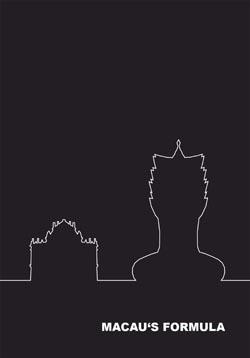Macau’s Formula

Students: Jeronimo Mejia, Lea Rüfenacht
in collaboration with CUHK Student Yick Ho Alvin Kung
Location: Group work in Hong Kong
Date: June, 2008
Type: Research project, student work, Macau
Macao mirrors Hong Kong as the second Special Administrative Region of the People's Republic of China. Recently it experiences a boom as world‘s gambling capital, with turnover already surpassing that of Las Vegas. Every 45 minutes, 24 hours a day, a fast ferry brings businessman and pleasure seekers from Hong Kong to Macao. The city seems to capitalize on its colonial architectural heritage, using it as its brand.
Macao is both the oldest and the last European colony in China, dominated by Portuguese since the XVI century until the handover in 1999, where the ‘Christian city’ and the ‘Chinese city’ had a complex interwoven development, still traceable in the urban fabric of the city. Entertainment and tourism industry have a long history in Macao. After the establishment of Hong Kong in 1843, Macao quickly lost its position as a trade port, adapting to a new role as a city where various leisure related activities (including opium trade, gambling and prostitution) flourished.
As for the whole of the PDR, the large impetus for development of Macao was given by liberalization policies in China since mid-1970s under Deng Xiao-ping and especially after the founding of SEZ – the twin city of Zhuihai - across the border to the north, in 1980.
Unlike in Hong Kong where, as a rule, economic development took precedence over monuments, the idea of transforming urban and architectural heritage into an attractive investment, through policies of benefits and compensations, appeared in Macao already in the 1980s, (see for example analysis of urban fabric of Macao by Alvaro Siza, but also numerous examples of adaptations and reuse of buildings directly related to Macao’s ‘King of Gambling’ Stanley Ho). These attitudes lead to the UNESCO World Heritage status in 2005; the city’s protected historical centre, with a network of public squares is today known as ‘Macao’s heritage corridor’.
Download the Book PDF

